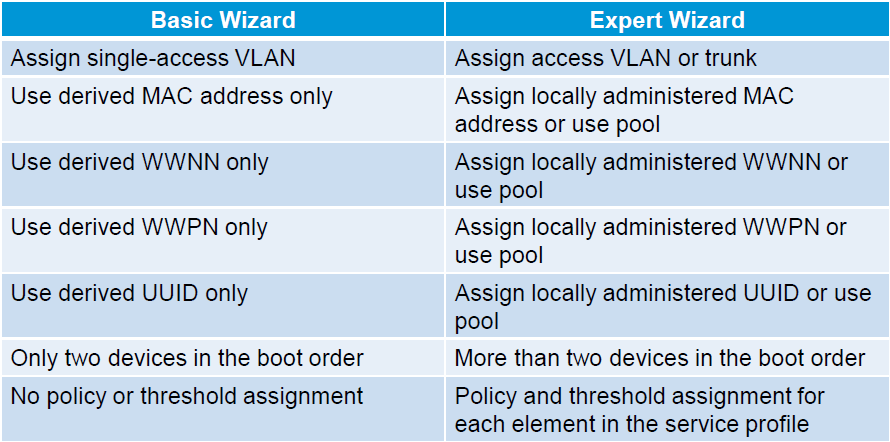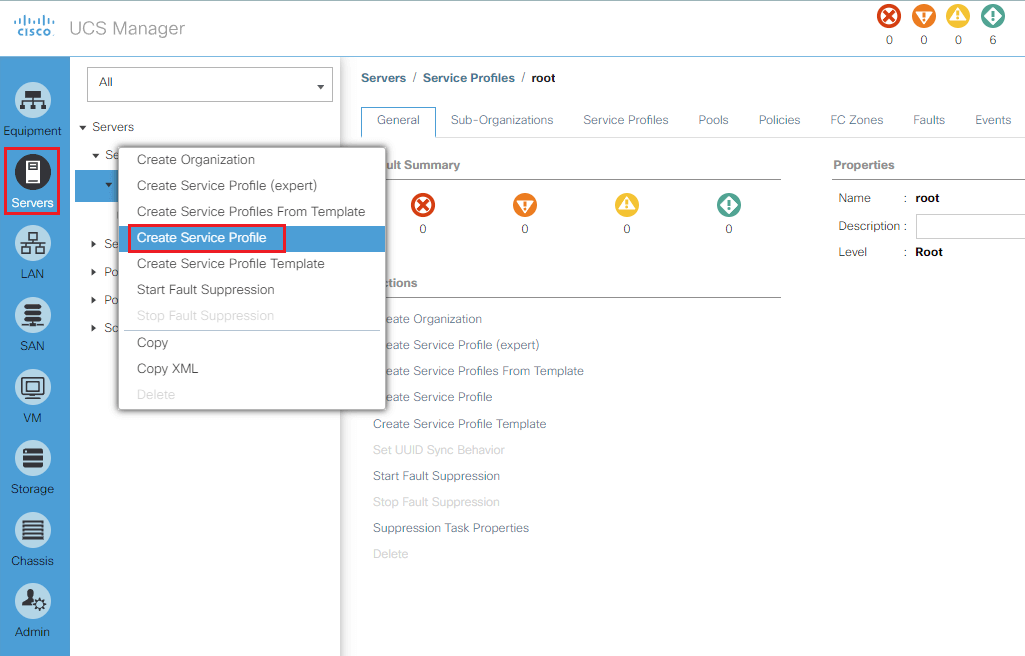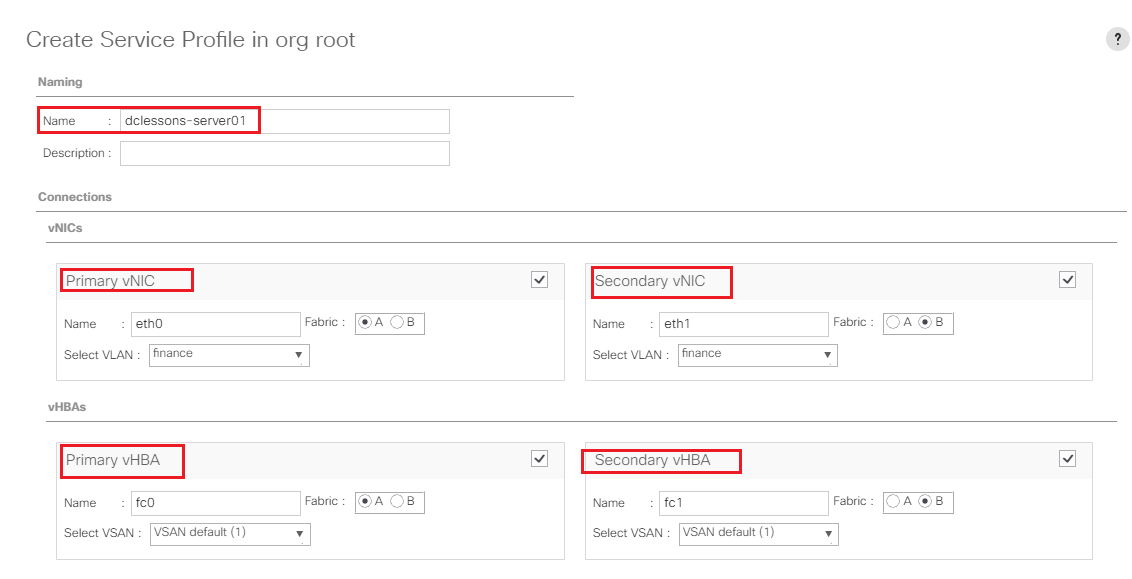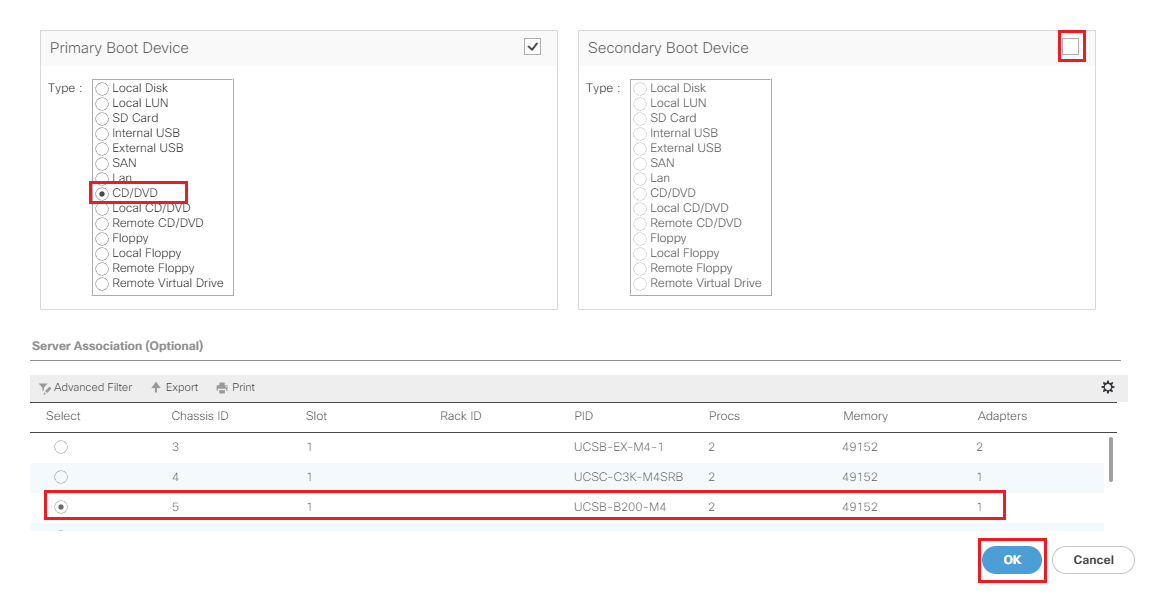EMAIL SUPPORT
dclessons@dclessons.comLOCATION
USService Profile
Service profiles are the structural elements of the compute node. Service profiles contain all of the identity resources and policies that are required to operate a blade server. The service profile makes stateless computing possible by abstracting identity and policy information from the physical server. If the compute node that a service profile is associated with becomes unavailable, the service profile is simply reassociated with another compatible compute node. When the operating system or hypervisor reboots on the replacement compute node, it believes that it is running on the same hardware.
A service Profile can be created in three Ways:
- Creating a basic Service profile
- Creating a Service Profile Expert Mode
- Creating a Service profile from Service Profile template
Service profiles contain identity and state information for a logical server. LAN and SAN connectivity to a compute node is unavailable without a service profile associated with it. Every compute node needs its own unique service profile. There is a 1:1 relationship. One compute node can be associated with only one service profile at a time.
The service profile represents a logical view of a server without any ties to a specific physical device. The profile object contains all of the elements of server function. This identity contains the unique information for that server, including MAC address, world-wide port name (WWPN), UUID, boot order, and so on. Each profile can only be associated with a single blade server at any given time, and every blade server requires a unique service profile.
Service profiles facilitate server mobility. Mobility is the ability to transfer server identities seamlessly between compute nodes so that the underlying operating system or hypervisor does not detect any changes in server hardware.
In environments where blades are managed as traditional individual servers, service profiles are still required. Service profiles provide LAN and SAN connectivity configuration. Configuring service profiles in this way is similar to the need to configure individual LAN and SAN ports for traditional rack servers.
The primary difference between the simple service profile wizard and the expert service profile wizard is the scope of tools available to manipulate within the wizard. The simple wizard provides a fast, single-page form for the rapid provisioning of a blade server using all derived identity values. The expert service profile wizard allows for the granular configuration of policies, identities, and thresholds.
Difference between Service profile Basic and Expert wizard is mentioned below:

Creating a basic Service profile
It is the most basic and rarely used option for creating the Service profile. It uses the burned-in physical identities. If we use this type of profile, it will be completed on a single page wizard by providing a basic server configuration.
- Login to UCS manager | Expend Servers tab in navigation page
- Expend Service profile tab and expend root | Right click on Root and click on Create Service profile

- Provide Name and a Short Description to the service profile.
- Create two Ethernet vNIC and two vHBA and select boot order and provide a Service Profile Association on the next pages. | Click OK to complete the Service Profile configuration.


Creating Service Profile in Expert Mode
Creating a service profile in the expert mode utilizes all UCS features and creates a rich service profile with abstracted identities, templates, and advanced policies.





LEAVE A COMMENT
Please login here to comment.